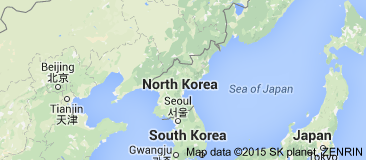



“We take seriously North Korea’s attack that aimed to create destructive financial effects on a U.S. company and to threaten artists and other individuals with the goal of restricting their right to free expression,” said the White House.
In the Sony film “The Interview,” two U.S. journalists invited to visit the DPRK head of state are coached by the CIA to kill him. The film ends with the Korean leader being blown up. This is what the U.S. government calls “artistic expression.”
In November, large amounts of data taken from Sony’s computers were released to the public, including many embarrassing and racist emails by top company officials.
Very quickly the FBI officially charged the DPRK with being the hacker. But computer experts have cast serious doubts on that.
Scott Borg, director and chief economist of the U.S. Cyber Consequences Unit, said to CNBC: “Most of the things the attackers were actually doing don’t point to North Korea. None of their activity inside Sony’s networks was focused on the film North Korea wanted to suppress. In fact, the demand for the film to be suppressed came relatively late in the communications that seem to have come from the attackers. It seems to have been added as an afterthought.
“The forensic evidence that does point to North Korea is all ambiguous and circumstantial. It mostly involves software being re-used that was widely available and servers being used that any skilled hacker could have accessed. … What’s more, any attackers capable of carrying out these specific attacks would also have been capable of faking the supposed evidence.” (“North Korea May Not Have Been Behind Sony Hack,” cnbc.com, Jan. 2)
Who else might hack Sony? Borg points out that “Sony carried out a cyber attack on its own customers in 2005-7 by putting root kits into their computers in an effort to catch them in copyright infringement.” Borg goes on to describe an “escalating” conflict between Sony and the “hacking community.”
The DPRK has demanded a joint investigation of the Sony hack. The U.S. has refused.
Long history of U.S. assassinations of world leaders
Sony’s movie is war propaganda, not “free expression.” Sony and the film’s creators consulted with high officials from the U.S. State Department while preparing the film, particularly the graphic scenes simulating the assassination of DPRK leader Kim Jong Un. The officials all gave their stamp of approval.
Not coincidentally, in December a group hostile to the DPRK said it plans to attach CDs of “The Interview” to balloons and float them into north Korea. (hollywoodreporter.com, Dec. 16)
The list of world leaders in the crosshairs of U.S imperialism is long. The U.S. tried many times to kill Fidel Castro, but failed. However, the CIA, Pentagon and State Department were successful in bringing about the deaths of Salvador Allende of Chile, Patrice Lumumba of the Congo, Sukarno of Indonesia, Moammar Gadhafi of Libya and Slobodan Milosevic of Serbia. Even long-time allies who became ineffective faced the long knives of U.S. “intelligence,” including dictator Rafael Trujillo in the Dominican Republic and Ngo Dinh Diem, the first president of South Vietnam.
When the Lumumba assassination and the attempted killings of Castro were exposed by the Senate’s Church Committee in the 1970s, the White House officially declared such assassination attempts were illegal. Later, President Ronald Reagan even issued Executive Order 12333, one provision of which states: “No person employed by or acting on behalf of the United States Government shall engage in, or conspire to engage in, assassination.” (archives.gov, Dec. 4, 1981)
But that was for public consumption. No government official ever obstructed U.S. imperialism in any way from using assassination of targeted world leaders to forward its own banking and corporate interests.
When NATO bombers dropped three bombs on Milosevic’s private villa in 1999, then Deputy Attorney General Eric Holder — now attorney general — called it legal. “There has not been any attempt on the part of the United States to target any particular individual.” (“Is It legal to Kill Qaddafi? – Probably So,” foreignpolicy.com, June 6, 2011)
Release of “The Interview” came shortly after the Senate released its report on the CIA’s worldwide torture campaign. It was also timed to coincide with a new U.S. campaign charging the DPRK with “human rights” violations.
But there’s greater resistance to this kind of pro-war propaganda than there used to be. What is bringing young people into the streets is the reality that unarmed Black people are being gunned down or strangled in the streets of the U.S. by racist cops, that even a 12-year-old child can be killed by cops when playing with a toy gun, and that the U.S. keeps more people in prison than any other country on the planet.
U.S. imperialism is in no position to charge any other country with human rights violations.
Download the PDF Black and white version All out for May Day! Students defend pro-Palestine…
By Jonas, Mutual Aid Scientific Socialism To the workers and free peoples of the world: We…
Houston Mumia’s supporters gathered in Houston’s historic Emancipation Park on April 27, not just to…
El Partido Mundo Obrero (PMO/WWP) saluda el 50 aniversario de la impresionante victoria de la…
Spain’s Prime Minister Pedro Sanchez cancelled a multimillion-dollar arms deal recently to buy munitions from…
Buenos Aires, April 15, 2025 Katz is an economist, researcher at the National Scientific and…